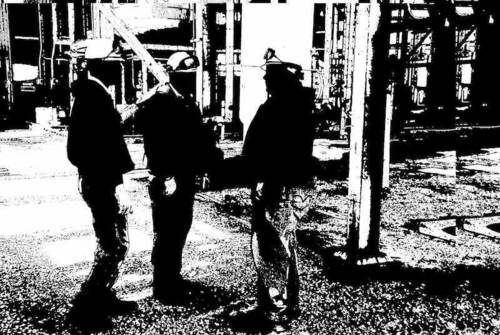In the 1980s, the oil and gas industry was going through the same crew change as it is now. Highly educated workers were laid off and the cycle is repeating itself. Will the industry learn its lesson this time?


When Javier Olivero received his pink slip from Schlumberger in May 2015, he became one of the 20,000 people from the global oilfield service company to lose his job due to low oil prices.
Olivero, 48, was hired in 2012 for the third time at the company. He started working in the oil and gas industry in 1989. By 2015, he had worked as a petroleum and reservoir engineer, he had experience in economics, decision analysis, and portfolio management.
His accumulated experience made him a valuable asset. Before being laid off, Olivero was part of a team developing Schlumberger software for economic and capital planning, reserves accounting, and portfolio management. That was until his entire department was outsourced to India to pare back the company’s payroll.
Olivero’s story is not simply one of tough economic realities, cyclical commodity fluctuations, and industry short-termism. In the latter half of his career, Olivero is one of thousands of departing experienced oil industry professionals-either forced out by low oil prices, or on the verge of retirement-who will be taking his accumulated experience and knowledge with him. His forced departure exacerbates a demographic crisis, an across-the-board changing of the gray guard, dubbed the "big crew change."
The big crew change first began in the 1980s. Faced with a crunch in the price of oil that lasted throughout the mid-1990s, companies drastically scaled back on hiring new employees and laid off older, more experienced, but expensive professionals, mentioned Dr. Ramanan Krishnamoorti, professor of petroleum engineering at the University of Houston.
"There was no place for companies to hire and place people. The only people who were kept were those capable of monetizing existing resources," Krishnamoorti said.
An estimated 600,000 jobs in the oil and gas industry were cut. What the industry unwittingly did in the 1980’s was plant the seed for a future demographic bubble that, 35 years later, is now bursting.
The current generation of experienced senior petro-technical professionals (PTPs)-those with at least 25 years of experience and who are about to retire-is the same group that lived through the layoffs of the 1980s and 1990s. With insufficient hiring and grooming of young professionals into oil and gas at that time, the industry failed to create a new generation of experienced PTPs who would now be 32 to 50 years old and entering their mid-to-late careers. "There is a gap now in that age profile," Krishnamoorti said. "That is what is biting the industry today."
Crunching the numbers: Hard truths
Within seven years, as many as 50% of senior experienced PTPs, those currently between 47 and 57 years old with at least 25 years of work experience will be retiring. That number represents as many as 20% of the entire oil and gas workforce in the U.S., said Kevin Lacy, executive vice president of technical staff at PetroSkills Alliance.
The alliance was formed in 2001 by Shell, BP, and Ophiuchus Consulting Group, a Toronto-based corporate development consulting firm, to provide competency training to those who work in the oil and gas industry. The alliance’s 33 members represent 40% of the world’s oil and gas production.
Between 2009 and 2015, the percentage of global PTPs with at least 25 years of experience fell from 38% to 26%, according to Lacy.
But while the industry faces large retirement numbers, and a trough in mid-career professionals, with oil prices hovering a bit $60 per barrel on June 24, 2015, companies are again scaling back staff, and cutting training and development.
"I’ll be a bit blunt. Companies when they enter a down turn like this on oil prices, they do stupid stuff," Lacy said. "I would say 80% have cut their training programs in half, and that leaves very few who are trying to stay the course, which is actually the smart thing because they still have numbers of people that need training."
Since January 1, 2015, as many as 150,000 jobs, both directly and indirectly tied to the oil industry in the U.S., have been cut due to low oil prices. The big four oilfield service companies-Halliburton, Schlumberger, Baker Hughes, and Weatherford-plan as many as 49,500 cumulative job layoffs this year.
Schlumberger’s 20,000 layoffs accounts for 15% of its total worldwide workforce.
And the cuts are likely to continue. The U.S. Bureau of Labor Statistics reported in June a loss of 500 additional jobs in oil and gas extraction with a further 16,900 ancillary supporting jobs.
According to Schlumberger’s 2013 Oil and Gas HR Benchmark, released in July 2014, which records and anticipates trends in technical staffing within the oil and gas industry, the projected global number of desired experienced PTPs in the oil and gas industry by 2018 will total 108,000. The 2018 projected global supply, however, is estimated at 75,300. Moreover, this information was obtained before the downturn in the industry.
Short-sighted remedies, Krishnamoorti suggested, such as layoffs during commodity downturns risk dissuading incoming college students from entering the oil and gas industry, further hampering the industry’s ability to recruit and retain a new generation of workers.
What the industry faces for the foreseeable future is a lopsided distribution in the age of oil and gas workers. The numbers of young professionals hired in the past 15 years make up a larger percentage than those older and more experienced professionals whom younger employees depend on for training and mentorship.
"If I were to bet today, and look four years down the road, I’d say we’ll need a lot of petroleum engineers," said Krishnamoorti. "Enroll as a petroleum engineer today because we are going to need you."
According to Schlumberger’s HR report, relatively inexperienced PTPs who are 25 to 29 years old in 2005 roughly represented 13% of the global workforce. By 2018, they’ll represent as much as 24%.
During this same time, mid-career professionals 40 to 44 years old in 2005 made up roughly 16%. By 2018, they’re expected to drop to almost 10%.
Ghosts from the past are today’s problem
Faced with low oil prices, sizeable layoffs, and with a seemingly new demographic bulge in the making, one would be forgiven for thinking the oil and gas industry was in the grips of a self-repeating cycle, that it is committing the same mistake today it did in the 1980s.
While there are certainly echoes of yester-year, "a big difference between now and the 1980s is that training and hiring activities have not stopped," said J. Ford Brett, CEO of PetroSkills. "The biggest thing will be how many new hires will these large companies have over the next few months?"
The American Petroleum Institute (API), the largest industry trade association in the U.S., predicts as many as 1.2 million jobs will be created in oil and gas by 2030. A vast majority of those jobs are anticipated in the Gulf Coast region of the U.S., where hydraulic fracturing of shale resource plays has prompted a renaissance of on-shore production. Reid Porter, API spokesman, said that the job numbers include all job categories and skill sets. Measuring exactly how many people enter the oil and gas industry meanwhile is tricky.
Who’s in, who’s out
Companies view workforce supply and demand as proprietary information, Samantha Sipowicz, a spokeswoman for the Society of Petroleum Engineers (SPE), said in a written statement to Oil & Gas Engineering.
SPE, however, publishes its own membership demographics, which is a useful barometer to assess the industry’s global workforce. By year-end 2014, SPE reported having 92,965 professional members from 147 countries. Of that number, 27,854 of them were 35 years old and younger, and 7,011 were at least 65 years old.
The average age of the SPE’s professional membership was 45 years old as of year-end 2014. Student membership in the SPE equaled 50,997 for the same period-a 13,290 increase from the previous year.
If companies stay the course over the next five to eight years and continue hiring and training employees, the oil and gas industry stands a good chance of recuperating from the demographic gap caused by the 1980 downturn, Brett said. But that could depend largely on the price of oil.
"The demographic health of the industry will be a lot better 30 years from now. I suppose it is possible if the price of oil falls to $20 or $30 per barrel, that people will do something that will be harmful," Brett said.
Invest in quality staff
Courtney Stephens, CEO of QED Energy Associates, which provides training programs for incoming oil and gas industry technicians, said that while companies are still hiring, the layoffs from commodity pricing have made it harder to find a job.
Whereas companies’ hiring processes a year ago may have taken two to three weeks, with the abundance of laid-off technical staff this year, companies may take 2 to 3 months to hire a candidate, she said.
Companies may also be using the drop in commodity pricing to their advantage by using it as an opportunity to reassess their hiring projections by reducing the amount of anticipated staggered retirements, according to Stephens.
"When we talk about the big crew change, HR departments are struggling with the fact that they are going to have people retiring over the next five years, and they are all going to be retiring at different times," said Stephens. "I think HR departments within oil companies have taken advantage of the fact that we have a commodity price crunch, and they are using this to get rid of anybody that’s within a couple of years of retirement."
Stephens said she has been receiving 25 resumes per week since the beginning of 2015 from close friends and contacts recently laid off; all of them within years of retirement and still hoping to find work. "They are engineers I know who have worked at oil companies for 25 years and are qualified experts," Stephens said. "They are very good at business development, structuring acquisitions and divestitures, they have intellectual capital stuck in their heads that no one else at their company can possibly have, their performance is outstanding."
If company leadership is not prepared for staff transitions, the laying off of its more experienced PTPs could cost them more than their initial payroll savings by either failing to aggregate or altogether losing the intellectual capital of departing staff. This is where companies face the real challenge to address the big crew change.
In the same way medical students do in-house residencies to learn how to apply their years of studies, so too do many college graduates entering the oil and gas industry. Schlumberger’s 2011 HR Assessment report said that PTPs could take as many as 11 years to acquire the necessary skills to make nonstandard, original technical decisions when working for national and international oil companies.
Faced with more relatively inexperienced PTPs and a deepening deficit of senior experienced PTPs, industry leaders are asking themselves how to efficiently dedicate time and resources to narrowing the experience gap within their ranks.
One solution could come in the form of technological applications to facilitate knowledge transfer, said Kandy Lukats, CEO of 3GiG, a knowledge capture software company based in Houston.
Lukats, 51, said companies are better able to use technology in ways that can create a corporate memory of how employees, technicians, and their leadership carry on large capital decision making projects. By integrating a knowledge capture software application within a company’s daily routine, companies could be better prepared for the brain drain of leaving retirees, or those senior professionals recently laid off."
Lukats, whose company’s clients include Hess, BP, and W&T Offshore, said there is growing interest within the industry for these types of software applications, but their adoption remains limited despite the decades companies have been tackling the big crew change.
"Everyone talks about it, but what we’ve found is unless you target tangible solutions specific to the way people work every day, companies won’t adopt technology, because they can’t prove any value," Lukats said. "Their ability to be agile and to react is way more efficient now, but the problem you have is, if you’ve lived through the 1980s, you were a young upstart and you wouldn’t have been in a management role to understand the impact on the business during that time. Therefore, companies are almost relearning what their predecessors already went through."
For Olivero, that is precisely his concern. He said that he was not surprised to have been laid off from Schlumberger. Having lived through previous price fluctuations, he knew what to expect, but he did not anticipate being let go before the software program he was working on was finished.

On a final note, he said when he was let go from Schlumberger, he was not mentoring anyone. Today, Olivero is attempting to start his own business by taking advantage of his experience and the low oil prices to enter into acquisitions and divestitures of oil and gas assets.
– Pierre Bertrand is an oil and gas markets journalist. He worked for two years in Kuwait and Oman as well as in the U.S. analyzing oil and gas markets. Edited by Eric R. Eissler, editor-in-chief, Oil & Gas Engineering, [email protected]


